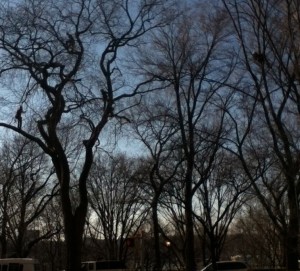Horst Faas–Brave and Brilliant Photojournalist, 1933-2012
 Horst Faas, the great photojournalist who covered conflicts in Bangla Desh, the Congo, and most famously Vietnam, died last week at age 79. In the 1960s he was a colleague to David Halberstam and Peter Arnett, among other notable reporters and correspondents. Faas’s longtime Associated Press colleague Richard Pyle has written the AP’s obituary and a personal remembrance of his dear friend and colleague, both of which are posted on the New York Times‘s superb Lens blog. With warmth and affection Pyle calls this period of his life “The Story That Never Ends.” His personal essay includes an account of the final reporting trip the two friends made together, in 1998, searching for the remains of four photographers–Larry Burrows of Life magazine, Kent Potter of United Press International, Keisaburo Shimamoto of Newsweek, and Henri Huet of Associated Press–all of whom were aboard a helicopter over Laos that crashed in 1971. In 2004 as co-authors the two published, Lost in Laos: A True Story of Tragedy, Mystery, and Friendship, their book on this incident and its aftermath. All photos for this post are credited to Horst Faas and/or the AP, gratefully borrowed for reproduction here so my readers can see Faas’s genius and his empathy, before seeing even more of his work via the key links to Pyle’s obituary and his personal remembrance. Click through to full post for all photos / / more . . .
Horst Faas, the great photojournalist who covered conflicts in Bangla Desh, the Congo, and most famously Vietnam, died last week at age 79. In the 1960s he was a colleague to David Halberstam and Peter Arnett, among other notable reporters and correspondents. Faas’s longtime Associated Press colleague Richard Pyle has written the AP’s obituary and a personal remembrance of his dear friend and colleague, both of which are posted on the New York Times‘s superb Lens blog. With warmth and affection Pyle calls this period of his life “The Story That Never Ends.” His personal essay includes an account of the final reporting trip the two friends made together, in 1998, searching for the remains of four photographers–Larry Burrows of Life magazine, Kent Potter of United Press International, Keisaburo Shimamoto of Newsweek, and Henri Huet of Associated Press–all of whom were aboard a helicopter over Laos that crashed in 1971. In 2004 as co-authors the two published, Lost in Laos: A True Story of Tragedy, Mystery, and Friendship, their book on this incident and its aftermath. All photos for this post are credited to Horst Faas and/or the AP, gratefully borrowed for reproduction here so my readers can see Faas’s genius and his empathy, before seeing even more of his work via the key links to Pyle’s obituary and his personal remembrance. Click through to full post for all photos / / more . . .

